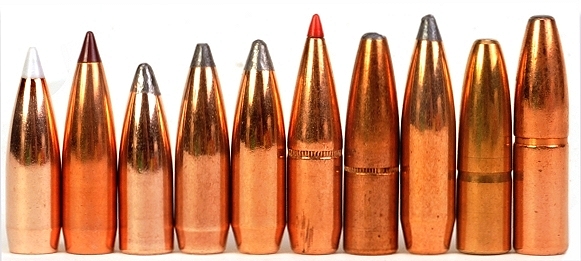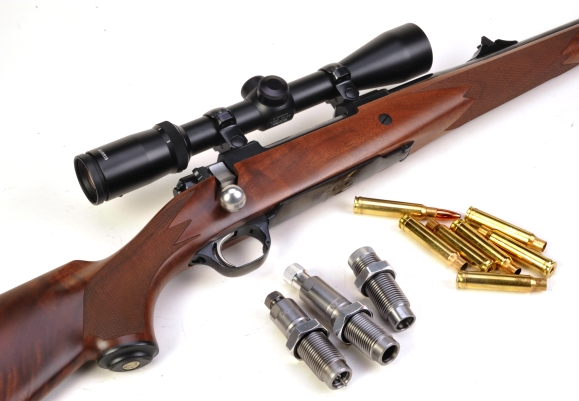
This next fall, I expect to have a great hunting season. To that end, I embarked on a controversial program that is based on a little known concept of eating reasonable amounts of everyday food and moderate levels of exercise. The program is simple and only involves some very basic math and some goal setting.
A good Internet calorie calculator identifies current calories consumption levels and provided two calorie reduction levels; fat burn calorie levels and severe fat burn calorie levels. Good nutritional information sites provide enough information to layout a healthy menu. Add in some patience, persistence and discipline and a couple of pounds will fall away each week. Finally, knowing a goal weight provides the proverbial light at the end of the tunnel and it allows a person to layout a menu consistent with sustaining that new weight. No starving involved, no bad food, no temporary diet. It is a way to change your typical body weight.
Above is a picture of two servings of one of my favorite weight loss program dishes. Light oatmeal bread French toast, cooked on a griddle, doused in lite syrup with three links of Lite Brown N’ Serve Sausage. 336 calories. I drink coffee black, no sugar. No sacrifice needed, even when you want to treat yourself to something special, if you are willing to really examine the goals and the choices. It’s a lot like developing handloads, you research and pick the components you like, then try to get them to work well together.
Good shooting, good looking and low in calories…

OK, I liked the Ruger in Part I and there is nothing that has occurred since then that would alter that opinion. The African carries the same attitude and appeal as my 375 H&H Express rifle right down to the stock cross bolt and sturdy metallic sights. The Ruger M77 Hawkeye African is a gun that instills confidence… a hunting rifle with intuitive feel and, I might add, it is a fine looking firearm.
I’m not sure what the M77 Hawkeye African chamber options signify. An end to short magnum cliché cartridges? An end to the “proper” 375 H&H cliché express rifles? Traditional cartridges for a traditional rifle? A new pragmatism hitting the industry? Unlike us, cartridges don’t grow old and slack off. The .338 Winchester Magnum is as much of a flat shooting bone crusher today as it was in 1958, there are more high performance factory loads than ever before and it is an excellent cartridge for the handloader.

I like 0.338″ bullet cartridges, particularly those of larger capacity, for the reasons noted in Part 1. Subsequently, I have a bullet inventory that is comprised of current production as well as those that have been out of production since… March 6, 1836.
(L – R 338-378 Weatherby Magnum, 338 Remington Ultra Mag, .338 Winchester Magnum, .338 Ruger Compact Magnum, 325 WSM… which is actually an 8mm Magnum)
| Cartridge | Capacity Grains |
Case Length “ |
Overall Length “ |
| 338-378 WM | 137 | 2.910 | 3.750 |
| 338 UM | 110 | 2.760 | 3.600 |
| 338 Win Mag | 86 | 2.500 | 3.340 |
| 338 RCM | 71 | 2.000 | 2.800 |
| 325 WSM | 82 | 2.090 | 2.860 |
| Cartridge | MV | ME | 300 Yard Drop* |
| 338-378 WM** | 3380 | 5075 | -5.1 |
| 338 UM | 3150 | 4406 | -6.0 |
| 338 Win Mag | 3075 | 4200 | -6.3 |
| 338 RCM | 2950 | 3866 | -7.0 |
| 325 WSM | 2900 | 3734 | -7.5 |
|
*200 Yard Zero 200 Grain Bullet |
|||
The 338 Winchester Magnum is about as moderate in capacity as a cartridge of this caliber can be without falling into the “almost as fast as” category. The 338 Winchester Magnum generates more than respectable levels of velocity even when compared to a full 100 grain capacity case like the .340 Weatherby Magnum or the larger Jeffery case based Remington Ultra Mag and it outperforms all of the 308 Winchester length cartridges of this type. Which takes us to another beneficial feature of the or the 338 Winchester Magnum. In comparison to the 308 Winchester length 0.338″ magnums, the 338 Winchester Magnum’s longer case and neck allow heavier, longer bullets to be properly seated without bringing the case capacity down below critical powder capacity levels.
#2 Step forward. The rest of you…

 These are some of my favorite o.338″ bullets for magnum applications. The second from the left is out of production, but it was included because I could never get them to group smaller than the state of Texas with any other 0.338″ cartridge and because I have like… 9 million of them I purchased on sale. I thought a couple hundred feet per second less velocity from the .338 Winchester Magnum might make a difference and give me a great load for a bullet that… is no longer manufactured. Humor me, I’m old.
These are some of my favorite o.338″ bullets for magnum applications. The second from the left is out of production, but it was included because I could never get them to group smaller than the state of Texas with any other 0.338″ cartridge and because I have like… 9 million of them I purchased on sale. I thought a couple hundred feet per second less velocity from the .338 Winchester Magnum might make a difference and give me a great load for a bullet that… is no longer manufactured. Humor me, I’m old.
| Bullet | Type | Mfg # | Weight | Length | COL | Net Capacity |
| Nosler | AccuBond | 57625 | 180 | 1.233 | 3.280 | 76.1 |
| Nosler | BallisticTip | 33200 | 200 | 1.330 | 3.340 | 75.2 |
| Speer SP | Hot-Core | 2405 | 200 | 1.145 | 3.310 | 78.4 |
| Sierra | GameKing | 2610 | 215 | 1.262 | 3.340 | 77.1 |
| Speer | BTSP | 2406 | 225 | 1.288 | 3.310 | 75.9 |
| Hornady | SST | 33202 | 225 | 1.437 | 3.340 | 72.6 |
| Speer | GrandSlam | 2408 | 250 | 1.332 | 3.300 | 73.9 |
| Sierra | SPBT | 2600 | 250 | 1.443 | 3.340 | 73.1 |
| Woodleigh | PP | 56B | 250 | 1.290 | 3.265 | 74.1 |
| Swift | A-Frame | – | 275 | 1.441 | 3.250 | 70.3 |
Powder choices were interesting. Re17 and H414 probably offered the best load opportunities; near case full, maximum velocity and high degree of accuracy, but others did well also. Might just be my efforts, but Re19 didn’t play as well as it did in reloading manual data, nor did 4350. Both were a bit too slow so case capacity ran out before maximum charges were reached. Same with 7828. A complete load sheet appears in the handload data section of RealGuns. I’ve gone back to the centralized load data approach because data was getting fragmented as additional articles were being written and the data wasn’t being consolidated.
Assessment of the combination…

Pretty easy cartridge to handload and relatively cost effective. I went with an inexpensive set of full length Lee dies and their factory crimp die. For $27 with shell holder its a good way to do the initial work with a round then move on to something else of necessary. I crimped every bullet with a cannelure for good measure. Unlike the .45-70 and other straight wall cases, I can’t say it made a performance difference, but it should help keep bullets in cases while residing in a magazine.
The gun is very very accurate as indicated on the load sheets. The best was 0.6″… make that 0.5″ for three shots at 100 yards, the greatest spread was 1.3″. The average was very close to an inch. Jackets get pretty thick above 215 grains, anything down from here is good deer fodder. 250 grains and above are very tough, particularly the Woodleigh PP and Swift A Frame. I’m sure a 225 grain bullet would work very well with elk and moose, a tough 250 like the Grand Slam or the 275 grain A-Frame would be excellent for larger bear.
Recoil isn’t bad. It is more than a 30-06 Springfield or a 300 Winchester Magnum. Closer to the 9.3x62mm and well under a light 375 H&H. Less than my 45-70 Guide Gun with handloads. The calculated number is 40 – 42 ft/lbs. The Ruger handles it very well as a function of stock geometry and just a tad more weight than the M77 non-magnum sporters. Excellent rifle, very nicely finished and a great choice for hunting tough big game.
Ruger’s M77 Hawkeye African Series Part 1
Ruger’s M77 Hawkeye African Series Part 2

Email Notification